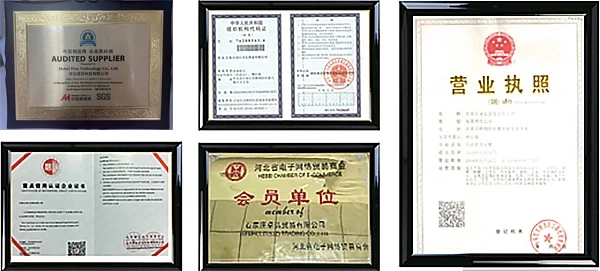



cationic polyacrylamide structure
Understanding the Structure and Applications of Cationic Polyacrylamide
Cationic polyacrylamide (CPAM) is a synthetic polymer widely recognized for its utility across various industries, particularly in water treatment, papermaking, and oil recovery. This flexible compound is characterized by its unique chemical structure, which consists of a polyacrylamide backbone with cationic groups introduced into its structure. This article delves into the structural intricacies of cationic polyacrylamide and explores its multifaceted applications.
Structural Overview
The base structure of polyacrylamide is derived from acrylamide, a simple vinyl monomer. When polymerized, acrylamide forms long chains, with each repeating unit linked by amide (CONH) bonds, giving rise to the term polyacrylamide. The modification of polyacrylamide into its cationic form is achieved by introducing positively charged functional groups. Commonly, these cationic groups are quaternary ammonium compounds, such as dimethylaminoethyl methacrylate, which provide the polymer with its positive charge.
The presence of cationic groups in the polymer chain significantly alters the properties of polyacrylamide. This modification enhances the polymer's ability to interact with negatively charged particles, including silt, clay, and organic matter, which are prevalent in various environmental and industrial processes. Furthermore, the degree of cationic substitution can be adjusted during synthesis, allowing for the tailoring of CPAM for specific applications.
Applications of Cationic Polyacrylamide
cationic polyacrylamide structure

One of the most prominent applications of cationic polyacrylamide is in water treatment processes. Due to its flocculating properties, CPAM is widely used to remove suspended solids, colloids, and other impurities from water. When added to wastewater, the positively charged cationic groups of the polymer attract negatively charged particles, leading to the formation of larger aggregates or flocs. These flocs can then be easily removed through sedimentation or filtration, resulting in cleaner water. The use of CPAM enhances the efficiency of both primary and secondary treatment processes, ensuring compliance with environmental regulations.
2. Papermaking Industry
In the papermaking industry, cationic polyacrylamide serves as a retention and drainage aid. Its ability to improve fiber retention and enhance drainage rates is crucial in the production of high-quality paper products. By promoting the agglomeration of fibers and fillers, CPAM ensures that more materials remain in the final product, reducing waste and improving the overall efficiency of the papermaking process. Additionally, its cationic nature aids in the adhesion of additives and pigments to the paper surface, enhancing print quality.
3. Oil Recovery
Cationic polyacrylamide has also found applications in enhanced oil recovery (EOR) processes. Its ability to improve the viscosity of water used in injection wells allows for better mobilization of crude oil trapped within reservoirs. By altering the flow dynamics within the oil reservoir, CPAM can effectively increase the yield of oil extraction, making it an essential component in modern oil recovery techniques.
Conclusion
Cationic polyacrylamide is a versatile polymer with a complex structure that enables it to interact with various materials in significant ways. Its applications in water treatment, papermaking, and oil recovery demonstrate its importance in modern industry. As research continues to advance the understanding of its properties and potential modifications, CPAM is likely to play an even more critical role in sustainable practices and innovative solutions across diverse fields.
-
Why Sodium Persulfate Is Everywhere NowNewsJul.07,2025
-
Why Polyacrylamide Is in High DemandNewsJul.07,2025
-
Understanding Paint Chemicals and Their ApplicationsNewsJul.07,2025
-
Smart Use Of Mining ChemicalsNewsJul.07,2025
-
Practical Uses of Potassium MonopersulfateNewsJul.07,2025
-
Agrochemicals In Real FarmingNewsJul.07,2025
-
Sodium Chlorite Hot UsesNewsJul.01,2025










